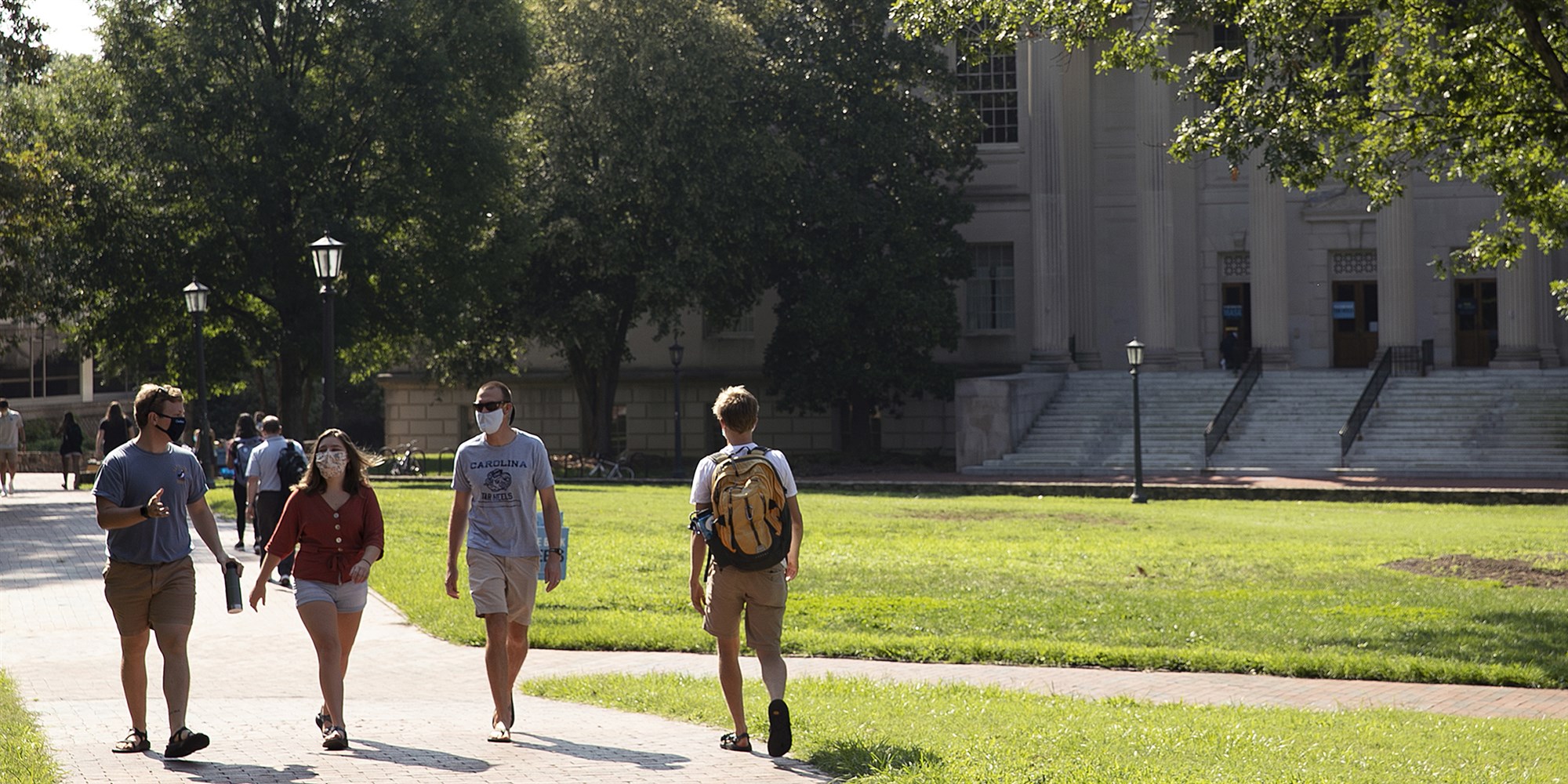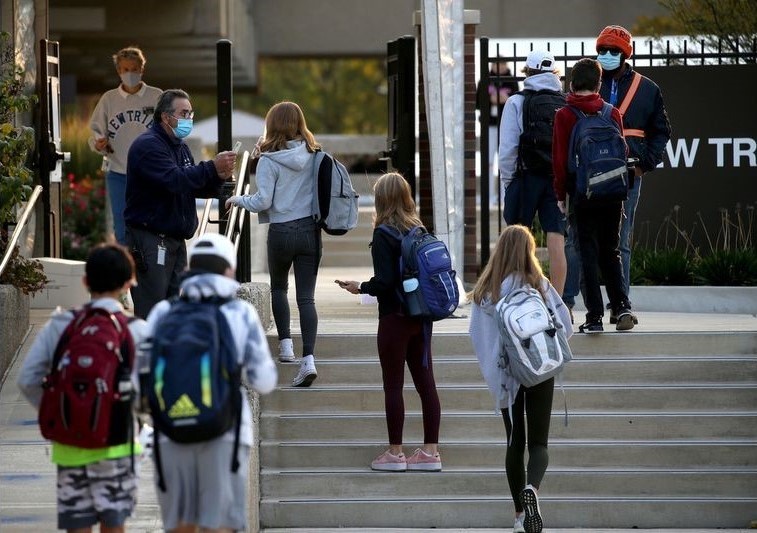As the country grapples with reducing the spread of the COVID-19 virus, its efforts have paid off. Many states have seen a downturn in the number of positive tests among residents. Following CDC recommendations, the U.S. has worked to "reopen," which included implementing new practices and protocols to ensure that all individuals' safety is the priority.
Unfortunately, the U.S. has reached a point where we are seeing over 100,000 new cases a day, which almost guarantees that we'll be seeing an increase in lockdowns and restrictions. This will undoubtedly cause a repeat of the entire process of reopening. In short, it's crucial to understand how to safely reopen schools by leveraging risk mitigation strategies. This guide will break down CDC compliance and how to achieve it when reopening your school.
Basic Reopening Guidelines
The CDC has clear recommendations and guidelines for the reopening process for schools and businesses to reduce the chances of transmission between individuals. Here are the key goals of the safe reopening guidelines released by the CDC:
- Encouraging Behaviors that Reduce the Spread of the COVID-19 Virus: These behaviors include hand washing, practicing social distancing, and wearing functional PPE (masks, gloves, etc.).
- Maintaining Safe and Healthy Environments: Ensuring that any individuals who may be sick stay home, disinfection of classrooms and all areas throughout the building, and no sharing of objects between individuals.
- Maintaining Safe and Healthy Operations: Staggering in-person classes and supplementing with remote learning, smaller classes, no intermingling classes.
- Sick Strategy Protocols: Contact tracing, remote learning resources for quarantined students, efficient communication, and monitoring local infection rates.
The Consequences of Non-CDC Compliance
Altering or, in some cases, completely overhauling your school's operations to comply with CDC guidelines might be challenging. However, failure to comply with CDC guidelines carries a much heavier toll. People can get seriously sick from this deadly virus. There are also other severe consequences of CDC non-compliance to understand. Here's a breakdown of the consequences schools may face for failure to comply with CDC reopening guidelines.
The Continued Spread of the COVID-19 Virus
The most glaring and dangerous consequences of not adhering to CDC recommendations is the continued spread of the COVID-19 virus among individuals. In schools, this can present a major risk as students return home to their families. An outbreak that begins within a school has the potential to spread exponentially. This has been demonstrated in Michigan, where 144 school-related outbreaks are directly responsible for a total of 6,402 cases so far. The investigation is ongoing.
Liability
If your organization fails to adhere to CDC standards of reopening and continued operation, then you may risk being held liable for endangering individuals, negligence, or in extreme cases, wrongful death. There are several ways in which you might have failed to protect the safety of staff, students, or patrons. This can include:
- Not providing PPE, such as masks, hand sanitizer, or gloves.
- Not amending workplace practices to prioritize safety, including not rearranging the layout to encourage social distancing.
- Lack of sanitizing efforts in the event that a customer or worker has contracted the coronavirus.
Though there are some legal protections that would make it difficult for a victim to pursue legal action against a school or business, it's not impossible. Regardless of the legal implications, it's better to be safer than sorry, so maximize safety by adhering to CDC recommendations.
Declining Reputation
Though this is certainly less dire than the other implications, it can still have a negative effect. If families don't feel safe allowing their children to return to school, they may decide to homeschool instead. Declining rates of public school enrollment can cause job losses and operational cuts. This has already been seen in counties in the U.S., where Washington state saw an overall 2.82% decrease in public school enrollment spurred by a 14% decrease in kindergarten enrollment.
Risk Mitigation Policies to Implement
Utilizing the current standards and guidelines and putting them in practice can ensure that students and staff remain safe while at school. A proactive approach is the best way to ensure that your school is always in compliance with CDC standards for reopening and continued operation.
That said, it can be challenging to devise a strategy that enables your school to perform case investigations and contact-tracing in the event that a student or staff member has been infected with the virus. It's crucial to have these strategies in place before opening to ensure effective communication, issue quarantine orders, and make informed decisions about staying open. To facilitate this course of action, here are the policies your school will need to implement:
Case Investigation
This is a crucial process where officials work with a COVID-19 positive individual to assess their health, discuss symptoms, and provide support and instruction for self-isolation. During this period, investigators can gather details about potential individuals who may have become infected during contact with the patient. Your school will likely work with local health officials to perform a case investigation.
Contact Tracing
This is the process of finding and notifying individuals with whom an infected patient had contact during the infectious period of the coronavirus. When communication is established, officials will discuss the virus and its effects, provide instructions for quarantine, provide testing, and provide relevant support and resources. In many cases, a school will likely send out a notice to families specifying that there has been a confirmed case and detailing the next steps.
Finding the Right Solution
Proactive strategies apply to all areas of risk mitigation. Schools will need to implement advanced solutions to reduce transmission, going beyond requiring the standard face masks, hand washing, and social distancing. In most cases, this means finding a safe, sustainable solution to promote a safer school environment.
Routinely manual disinfection in the spaces that staff and students occupy is a great start, but it’s not an effective long-term solution. UVC disinfection is an effective solution that renders viruses like COVID-19 inactive, meaning they no longer pose a threat of infection.
However, the real power of UVC disinfection is in its application. It’s a solution that can be installed with intelligent software that starts disinfection on a scheduled basis after ensuring that a room is empty. With this safety feature, routine disinfection is guaranteed. The CDC is committed to ensuring that everyone stays safe during this pandemic. Complying with their standards is not only effective risk mitigation. It also provides an opportunity to invest in a long-term, sustainable disinfection solution for your school.
Do you think that UVC disinfection is the best solution for reopening schools safely? Let us know in the comments below.


